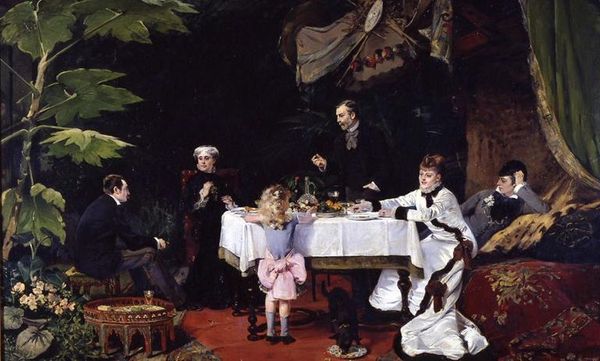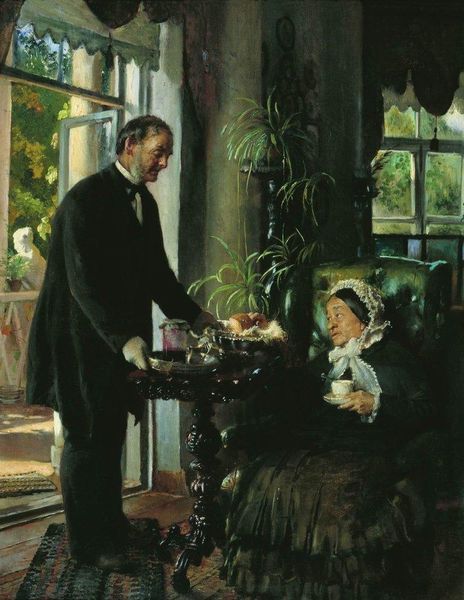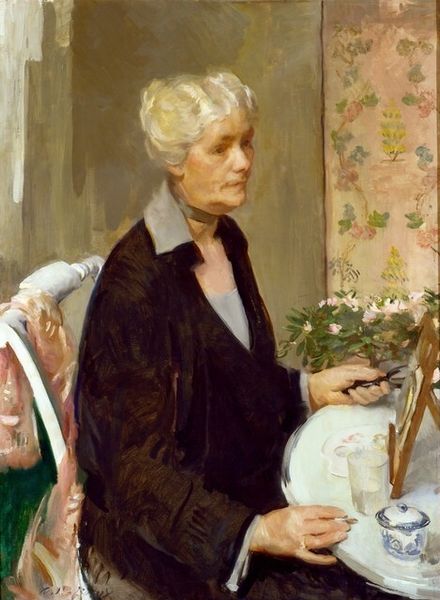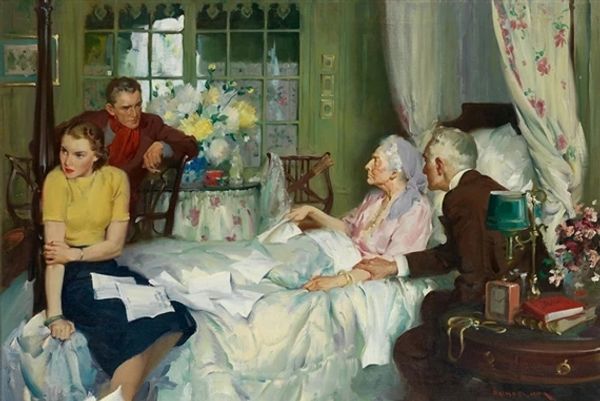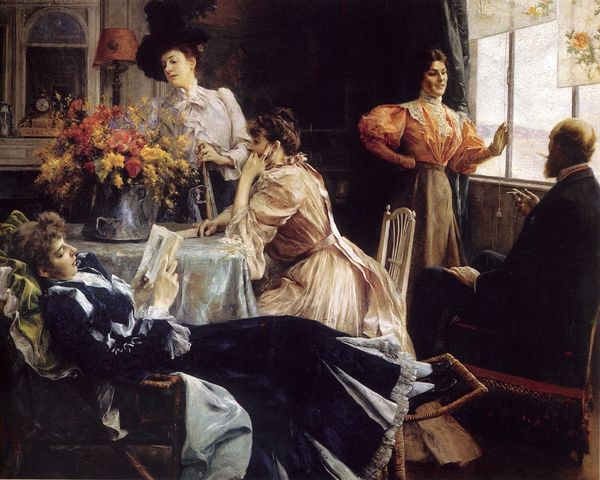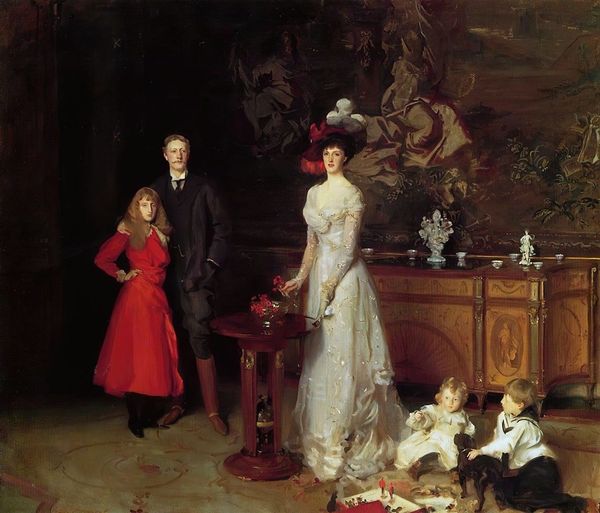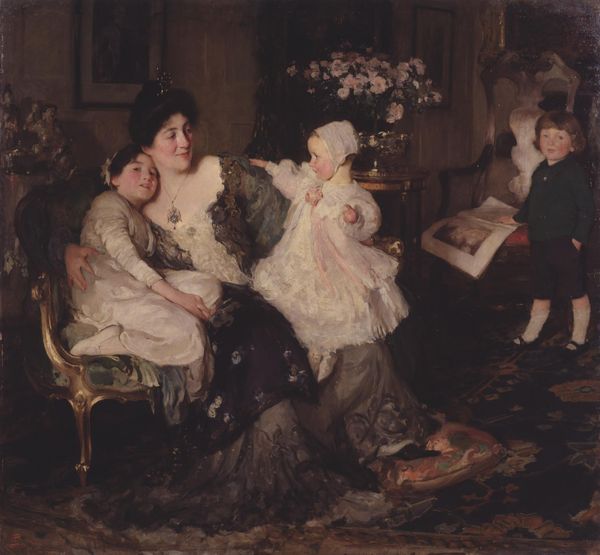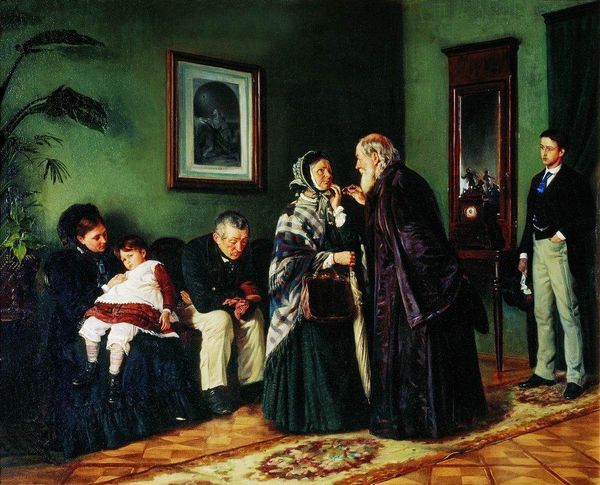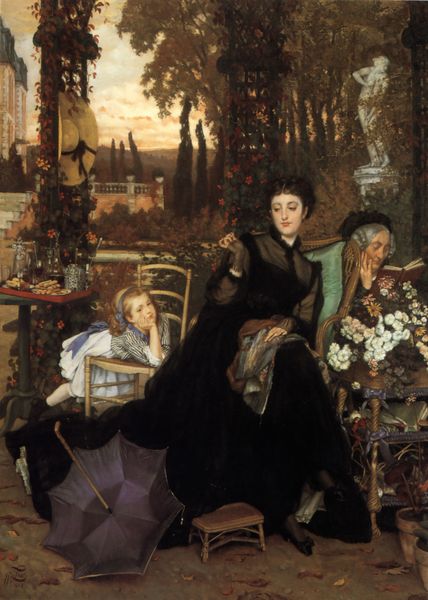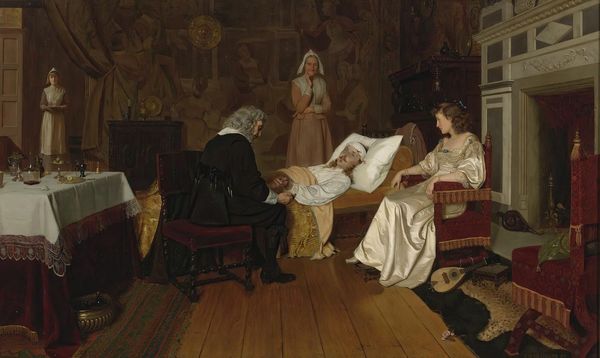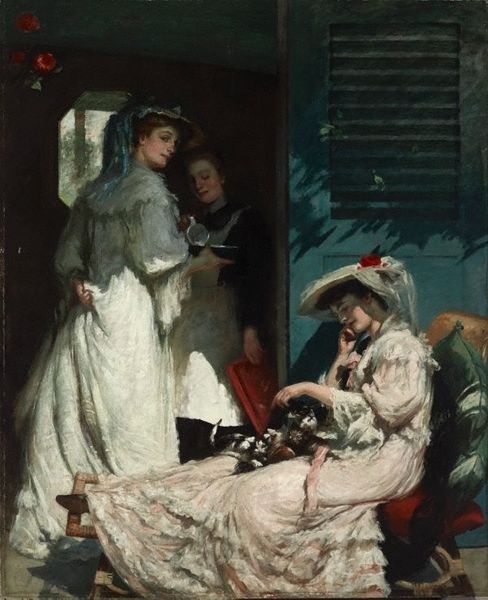
Dimensions: 122 x 180 cm
Copyright: Public domain
Editor: So, this is *Padres Del Pintor*—or, the artist's parents—an oil on canvas from 1910 by José Garnelo. It depicts an intimate domestic scene. I'm really drawn to the way Garnelo captures the textures, especially the fabrics, they almost look real. What stands out to you most in this piece? Curator: For me, it's the quiet representation of labor embedded in the scene. We see this through a material lens, examining the clothing of the subjects. The grandmother's black dress, likely hand-sewn with perhaps re-purposed fabric, speaks to the practicality and resourcefulness of the time. Notice the grandfather's tailored suit – the sign of bourgeois respectability bought by labour and a certain aspiration of class. Even the child's pristine dress contrasts the adults'. It underscores the aspiration for a better future through their offspring. How does the use of materials influence your perception of the family's social standing? Editor: That's a fascinating observation. I hadn't considered how the materials themselves act as social markers. The clothing really does communicate their economic realities, doesn't it? It makes me think about how labor informs even seemingly simple portraiture. I guess, in a broader way, that all this wealth depicted relied on materials being mined, crafted, traded, manufactured – entire globalized processes in effect! Curator: Exactly! And think about the production of the painting itself—the canvas, the pigments. Even those materials tell a story of trade, industry, and artistic production. We need to view art as something produced from somewhere, rather than a mysterious ethereal source of unexplained beauty. How do you think this shift in focus might change our approach to art history? Editor: That's a really different way of thinking about art, one I'll definitely have to spend more time reflecting on. Seeing art in this way brings up questions of value – not just monetary, but about the value of different kinds of labor. I think, maybe we miss that sometimes if we're not critical in assessing not only who art represents, but also how it came to exist. Curator: Precisely! A focus on the materials, production and processes of art and design provides a more complete picture, situating art in society as a whole. It's essential to reveal these layers for a richer appreciation of this image and art more broadly.
Comments
No comments
Be the first to comment and join the conversation on the ultimate creative platform.

